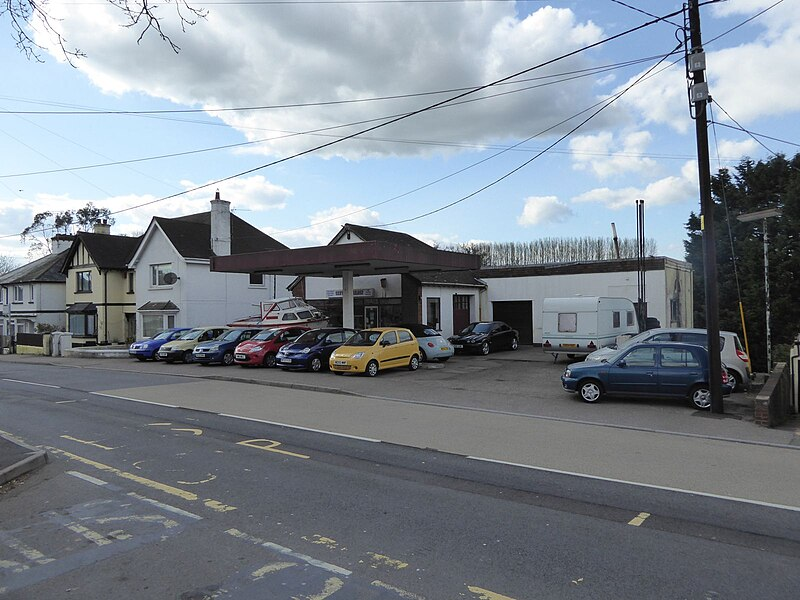Why should you check a car’s VIN number before buying it?
Today’s car buyers have numerous tools at their disposal to verify a used car before buying it. These include free VIN checks provided by services like Crash Status. The vehicle’s condition should be inspected by a mechanic and a diagnostician at a service station. Alternatively, such an inspection can be carried out by an experienced automotive expert. Why should we check a car before buying it? We’ll explain on the basis of a true story about a fraudulent used car sale.
This unfortunate purchase serves as a warning to anyone looking for a used car. Our user lost a lot of money due to dishonest sellers, who sold them a damaged vehicle.
Sometimes Crash Status users thank us for having avoided buying a post-accidentor flood-damaged car thanks to our service. They checked the car using its VIN number for free. Sometimes they share with us longer descriptions of their stories to warn others, so we’ll publish one such story for you as a cautionary tale.
A free VIN check and a technical inspection are a must!
Scammers will always pop up wherever there’s an opportunity to make money. The risk of being scammed in the second-hand car market is very high. Why?
- The European second-hand car market is enormous, with millions of car sale transactions each year. There’s no shortage of buyers.
- The market for premium used cars is growing. Dishonest sellers can earn the most on the most expensive cars. These cars are often “tweaked” using second-hand parts.
- Many methods can be used by sellers to completely “hide” themselves. A dealership might act only as an intermediary. When buying an imported car, the buyer signs a contract with the car’s previous owner, not the importer. After the purchase, the dealership assumes no responsibility for any defects and the importer disappears.
- Automotive stores are full of chemicals that can mask various issues with a vehicle.
- There is widespread access to second-hand parts from scrapped cars.
- Modern cars are full of electronics. Does this make them more resilient to dishonest sellers? No. A dishonest seller can buy a professional diagnostic computer and illegal software, allowing them to adjust the odometer and use emulators for missing or removed parts. With some basic knowledge of electronics, they can even disconnect warning lights on the dashboard, such as the airbag system warning (SRS).
True story of a car sale fraud
Adam decided to replace his 15-year-old car with a newer model five years ago. He sold his accident-free, well-maintained vehicle easily. His next choice was a medium-size estate with a small petrol-powered engine, manufactured in Europe in cooperation with a well-known German car manufacturer. The car was a popular model with good reviews and affordable spare parts. He was aiming for a 6- to 7-year-old car and started searching online.
Adam soon came across his dream car. Recently imported, it looked great in photos, had top-notch features and was considerably cheaper than similar models by about 2,000 euros and had low mileage. The seller claimed the car was rarely used, in excellent condition and well-maintained.
The inspection on site was a real pleasure. The car was polished, smelled nice inside and all of the dashboard elements were in shining condition. The engine started without any hesitation, although the seller only agreed to a short drive since the car wasn’t registered. The deal was concluded the very same day. Adam signed a purchase contract with the German owner, whom the seller praised as a meticulous caretaker. The friendly seller even arranged the initial inspection, transport and provided service records confirming the car’s regular maintenance.
Adam wanted to take the car to a service station for diagnostics, but the 20 km distance posed logistical challenges. But with the seller demonstrating a German inspection certificate stating the car’s excellent condition, he didn’t feel the need. Adam paid 15,000 euros, pleased with the savings in comparison with similar models.
Problems following the purchase
Within weeks, the first issues began to surface, starting with the front lights. The right LED headlight failed, requiring a repair costing 200 euros, while the fog lights needed replacing due to wiring corrosion, costing several hundred euros each. This was only the beginning of a nightmare.
Once every few days, another feature stopped working. The driver’s door speaker failed, the window lifting mechanism stopped working and a warning message appeared on the digital dashboard. Soon, the cabin developed a musty odor, which even the cleaning of the air conditioning system didn’t eliminate, and the condenser had corroded and had to be replaced. Eventually, a service station mechanic determined that the car had been flooded, which explained the persistent electrical issues.
To make matters worse, the mechanic suspected the car was a post-accident vehicle, as parts like the water and AC radiators had been clearly replaced. Additionally, it became clear the car’s airbags had been deployed previously. The SRS warning light was disconnected and the SRS control module was corroded. Adam even found that silicone patches were used on the sunroof and that chemicals were used to seal the steering and lubrication systems.
Four months later, Adam checked the car’s VIN number and discovered a recorded accident. By purchasing a report on Crash Status, he confirmed severe front damage, a broken windshield and minor structural damage to a pillar and the roof. Photos showed the car among wrecked vehicles at what looked like a scrapyard, clarifying the source of water damage. It seemed the car had been left exposed in a humid area, causing sensor corrosion and ABS/ESP issues.
The repair costs were staggering. The mechanic replaced the entire interior, removing rust and replacing electronics, fluids, filters and malfunctioning components. A specialized company installed a second-hand SRS module,new airbags and seatbelt pretensioners.
What about the seller?
Nothing. Adam bought the car from a German citizen, not the local seller, who hadn’t even parked the car near his home. The seller knew what he was selling. The technical inspection certificate and service records were all fake and the seller earned about 5,000 euros. The German was happy to offload a junk car he should have scrapped.
Let this true story serve as a warning
Are you planning on buying a used car? Check it using its VIN number for free with Crashstatus.com. If the car has any damage history, reconsider buying it. If you still want it, make sure you know the true extent of the damage to assess whether its repair is worth it.

